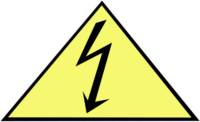Three key factors can determine the intensity of an arc flash harm on you:
• The quantity of fault current available in your system
• The time until an arc flash fault is cleared
• Your distance from an arc
A variety of choices in design and equipment configuration can be made that affect these factors and reduce the incidence of AFH.
The best arc flash and fault analysis programs are based on the test results in IEEE-1584 and on the recommendations of NFPA-70E. These programs can identify the grade of Personal Protective Equipment (PPE) clothing required by operators and create warning signs for electrical equipment stating the PPE required when working near energized equipment. These programs should calculate quickly and accurately the effects of flowing faults in three-phase, single-phase and DC power distribution systems.
Equipment Integration
Reducing your need to open that cabinet may be one of the best ways to reduce the incident of arc flash in your facility.
People open cabinets for lots of reasons but, typically, it’s because they don’t know what’s going on in there. You may know there’s a problem; maybe you are getting an alarm or a circuit has tripped. But what if you could get that information, automatically, without opening the cabinet?
By linking your equipment — motors, drives, switchgear, to a communications network architecture, you can monitor and pull diagnostic data, perform trend and root-cause analyses, and see potential problems before sending an electrician into the plant to deal them. This could mean workers are opening electrical cabinets less often. This data may not stop arc flash, but it can organize and manage the power infrastructure in such a way that it will significantly reduce exposure to potential hazard.
Source: Kevin Meagher, Chief Technology Officer, Power Analytics Corporation



